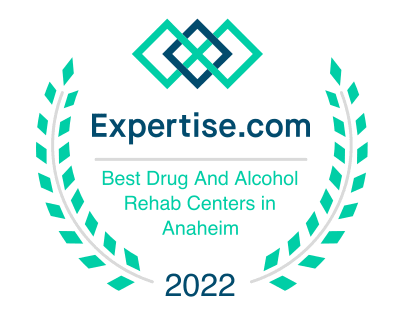Fentanyl is a prescription drug used to treat patients with severe pain. Today, illicit forms of this synthetic opioid are widely prevalent in the streets as an illegal substance. It is manufactured in clandestine laboratories, mainly in China and Mexico, and smuggled across the borders. At 50 times more potent than heroin—and significantly cheaper—drug dealers often use fentanyl to extend their heroin supply and increase demand.
Unfortunately, the powerful and deadly drug is no longer just a concern for people suffering from opioid use disorder. A growing number of other illicit drugs are now being laced with fentanyl, putting all recreational drug users at risk.
Most recent fentanyl-related overdoses and fatalities are associated with illicitly made fentanyl. The drug is often mixed with heroin and/or cocaine to enhance its euphoric effects. Overdose risk is always present with fentanyl use due to its potency and lethality, but those with low tolerance and those who are not aware of fentanyl in the specific drug they use are at much higher risk.
Here is what you need to know:
- Fentanyl is a highly potent opioid drug that’s 50 times more powerful than heroin and up to 100 times more potent than morphine.
- Today, synthetic opioids like fentanyl are the most common drugs involved in drug overdose deaths.
- Party drugs like cocaine are increasingly laced with fentanyl, and the consequences could be deadly for unassuming people ready to hit the party scene in the post-pandemic world.
- As fentanyl-laced drug overdoses increase, experts call for greater awareness among college students and other recreational drug users who may otherwise have a too-casual perspective on their club drugs of choice.
Fentanyl in Today’s America
Latest figures reveal over a 66% hike in drug overdose deaths among Washington residents in 2021, exceeding 2,000 cases. And in California, a recent report from San Francisco’s Chief Medical Examiner reveals that 697 people died of an accidental drug overdose death in 2020 — more than double the number of San Franciscans who lost their lives to COVID-19.
Officials believe that stress, isolation, and other mental health challenges related to the pandemic are thought to contribute to rising fentanyl overdoses. But just because lockdowns are ending and people are getting ready to go out and socialize again doesn’t necessarily mean the risk of fentanyl will go away. On the contrary, many experts worry this post-pandemic period will see a rising number of casual party drug users unknowingly exposing themselves to fentanyl-laced substances.
Unfortunately, in 2021, the number of fentanyl overdoses increased significantly. The border crisis has allowed the Cartels to flood our streets with this deadly drug. Sources with the Drug Enforcement Administration (DEA) report that fentanyl is the chosen drug for criminals because it’s highly profitable, extremely potent, and easier to smuggle due to its small size. Furthermore, agents disclose that the cartel intimidates migrants to transport the illegal drug within their belongings, including those from children.
If we consider that there were more than 180,000 migrant encounters in our borders just in the month of May, including MS-13 gang members, sex offenders, and drug dealers, we can realize that the risks imposed on our citizens are just rising. Fentanyl seizures at the border are up by more than 300% over May last year.
Fentanyl-Laced Recreational Drugs: A Growing Threat in the Post-Lockdown Party Scene
If you consider the freedom from the COVID lockdowns with the insurgence of fentanyl through our borders, the risk is obvious—and worrisome. Party-goers excited to go out with friends again may take fentanyl thinking it is something else. Or, partygoers could take their intended drug without realizing it is also laced with the synthetic opioid.
Beyond increasing the risk of accidental overdose deaths, the rising prevalence of fentanyl-laced drugs may also drive an increase in opioid use disorder. This public health crisis already costs the nation over $471 billion per year.
Prevalent Risk Factors of a Fatal Overdose:
- Taking illicit lab-made drugs
- Mixing drugs, particularly opioids, alcohol, or sedatives
- Relapsing after a period of sobriety (low tolerance)
- Teens or people in their early 20s are giving in to peer pressure
What are the Common Signs of a Fentanyl Overdose?
- The face becomes notably pale and clammy
- Limp body
- Bluish fingernails or lips
- Vomiting or making gurgling noises
- Unable to speak or be awakened
- Labored or no breathing
- Slow or no heartbeat
Tips to follow in case of an overdose?
- Administer naloxone (Narcan), if you have it.
- Call 911 immediately!
- Support the person’s breathing.
- Help the person lay on their side once they resume breathing.
- Stay with the person until emergency services arrive.
Sounding the Alarm: Here’s What to Know About Fentanyl Overdose
In response to this growing public health concern, experts want more people—especially college-aged students—to be aware of the dangers of fentanyl and its widespread prevalence in club drugs.
This awareness must include the ability to recognize the signs and symptoms of a fentanyl overdose.
Fentanyl overdoses are reversible with the drug naloxone, which can be administered via injection or nasal spray. But long-term brain damage, coma, or death can occur unless treatment is administered quickly—which is why anyone who believes they are witnessing someone having an overdose should call for emergency medical services immediately.
New Fentanyl Test Strips (FTS) Strive to Reduce Fatal Drug Overdoses
Substance Abuse and Mental Health Services Administration (SAMHSA) and The Centers for Disease Control and Prevention (CDC) are joining efforts to establish federal funding for rapid fentanyl test strips (FTS). These efforts aim to slow down the dramatic spike in overdose deaths driven mainly by powerful synthetic opioids, especially illicit fentanyl.
Test strips provide users with knowledge of fentanyl presence before they use the illicit drug. Although using illegal drugs is always risky, not knowing what you are buying and the drug’s potency brings the overdose risks to a whole new level.
The latest CDC data shows that more than 93,000 people died from drug overdoses in 2020 alone. Although these stats are the highest number of overdose deaths ever recorded by the organization, in 2021, the numbers have just accelerated.
“We must do all we can to save lives from drug overdoses,” said CDC Director Rochelle P. Walensky, MD, MPH. “The increase in drug overdose deaths related to synthetic opioids such as illicitly made fentanyl is a public health crisis that requires immediate action and novel strategies.”
Conclusion
Fentanyl is a powerful synthetic opioid that is significantly more addictive and cheaper than heroin. In the United States, no other drug class is involved in as many drug overdose deaths as synthetic opioids. Today, fentanyl is also added into many popular club drugs, including cocaine, MDMA, and meth. The consequences of this drug could be devastating for recreational users who are unaware of the risks they assume while “hitting the party scene” with their friends.
In other words, fentanyl is no longer just a concern for people who are dependent on opioids. Anyone who chooses to use illicit substances must be aware that their decision could unintentionally expose them to a potent and deadly drug.
Call now to speak confidentially with an addiction expert
Sources:
- Street Fentanyl Surges In Western U.S., Leading To Thousands Of Deaths
- Fentanyl Has Spread West and Overdoses Are Surging
- Department of Public Health: Report on Accidental Overdose Deaths
- Provisional Drug Overdose Death Counts
Written by Sara McEvoy, PT, DPT
Sara is a licensed and board-certified Doctor of Physical Therapy. She earned her undergraduate and graduate degrees from Boston University. Sara is also a professional freelance writer and copywriter. She researches and writes primarily within the health and wellness fields.
Reviewed by Clare Waismann, RAS / SSUDCC, Founder of Domus Retreat®
All topics for the DomusRetreat.com blog are selected and written based on high editorial quality standards and cited source material. Clare Waismann, Registered Addiction Specialist (RAS), Substance Use Disorder Certified Counselor (SUDCC) and founder of Domus Retreat and Waismann Method® reviews articles for accuracy, credibility, and relevancy. Clare Waismann is an authority and expert on opioid dependence and related topics covered on the DomusRetreat.com blog. For additional information and disclaimers regarding third-party sources and content for informational purposes only, please see our Terms of Service.







